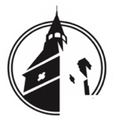Assistant Principal's news

Procedural Knowledge and Declarative Knowledge
Did you know that knowledge can be separated into two types: procedural knowledge
(knowledge of how to do something) and declarative knowledge (knowledge of facts/information). Students are involved in both types of knowledge in their learning.
Students use procedural knowledge to learn letters/sounds, reading cues and even handwriting. They also use procedural knowledge to learn numbers, times tables and the steps in the 4 operations (addition, subtraction, multiplication and division).
This sort of knowledge is prescriptive and is used for specific purposes. Procedural knowledge needs to be practised over and over again before it is committed to memory.
Declarative knowledge involves more complex learning which involves a number of processes. These can include integrating information from different sources, inferring, connecting new information with existing knowledge, producing explanations and representing knowledge in different ways.
How a student learns is dependant on the knowledge they need to acquire. If it’s number facts, reading cues or even using a computer tool, students need lots and lots of practise in different contexts. This is usually the type of learning that can be consolidated at home.
If a student wants to learn about the structure of the solar system or the history of their family, they need time to research, make connections, find examples, develop a perspective and present their understanding. These are all skills that are explicitly taught and practised in a variety of ways in the classroom. This leads to an understanding of the way the world, or some aspect of it, works.
